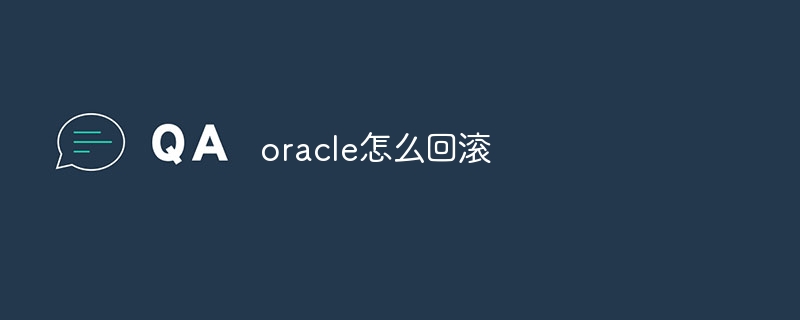Rollback is a database operation used to undo changes to the database. In an Oracle database, rollback can be performed by connecting to the database and starting a transaction. Execute a ROLLBACK statement to roll back changes in a transaction. Commit the transaction to permanently save the rollback operation (optional). Additionally, Oracle provides other rollback options such as SAVEPOINT rollback, single row rollback, and table rollback.

What is rollback?
Rollback is a database operation used to undo recent changes to the database. Rollback is critical when something goes wrong or data needs to be restored.
How to roll back an Oracle database?
Step 1: Connect to the database
Use SQL*Plus or other client tools to connect to the Oracle database you want to roll back.
sqlplus username/password@databaseStep 2: Start a transaction
Before performing a rollback operation, a transaction must be started.
START TRANSACTION;Step 3: Execute the rollback statement
To roll back all recent changes to the current transaction, use theROLLBACKstatement:
ROLLBACK;Step 4: Commit the transaction (optional)
If you need to permanently save the rollback operation to the database, you need to commit the transaction:
COMMIT;Rollback for specific scenarios
In addition to rolling back the entire transaction, Oracle also provides other types of rollback options:
The specific rollback type used depends on the specific situation and the amount of data that needs to be rolled back.
The above is the detailed content of How to roll back in oracle. For more information, please follow other related articles on the PHP Chinese website!




